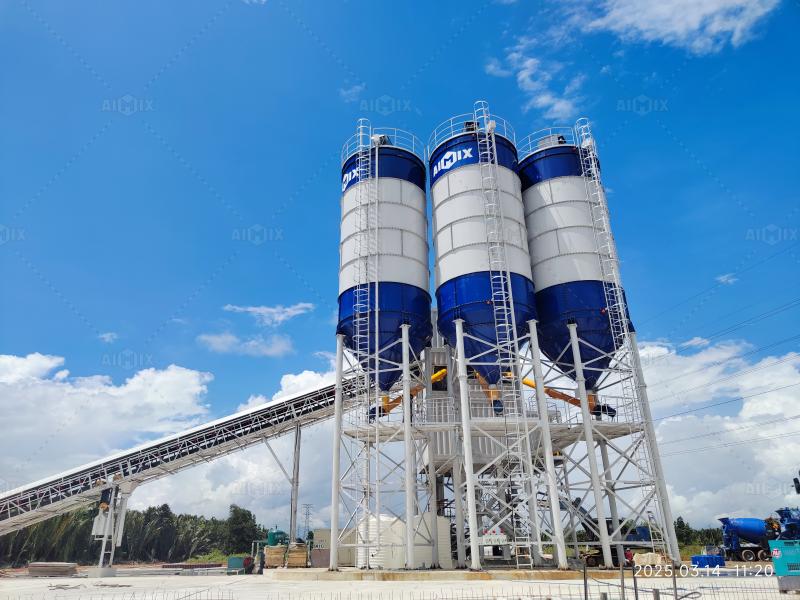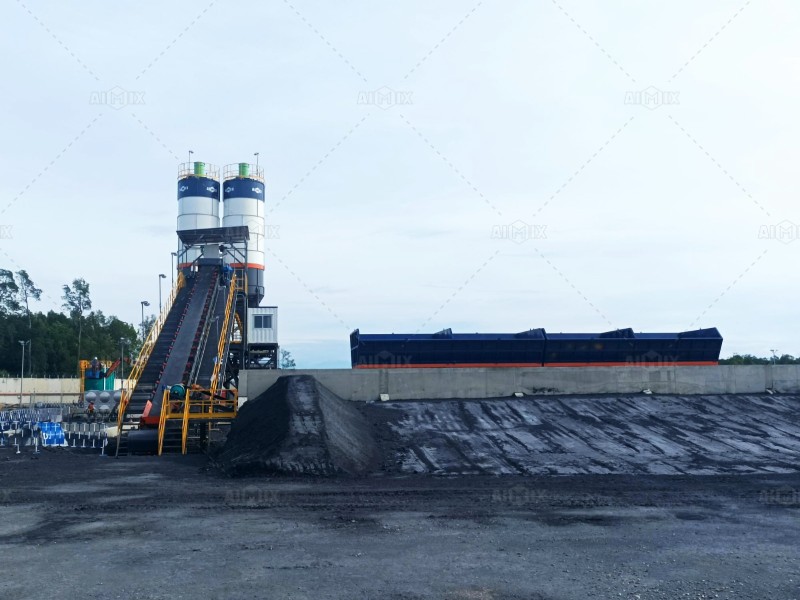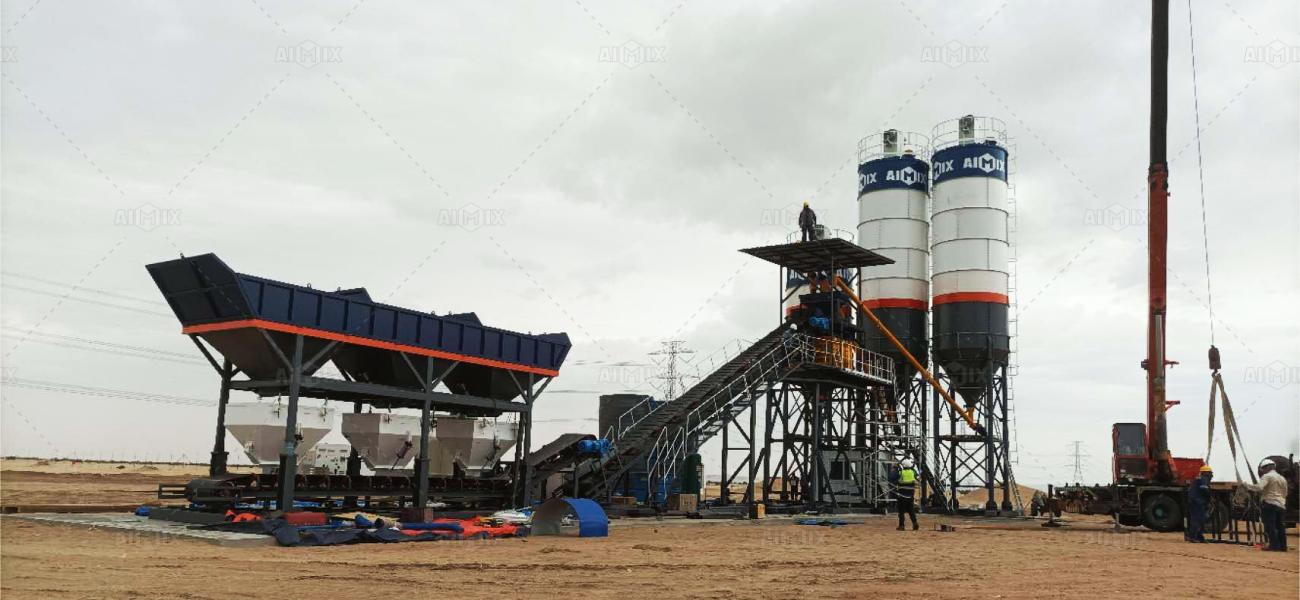In the competitive world of construction, time is concrete – literally. Meeting demanding project schedules often hinges on the ability to produce vast quantities of high-quality ready-mix concrete efficiently. For operations requiring significant volume, high-capacity concrete batch plants are the backbone. However, simply owning a large plant isn’t enough. Strategic configuration is paramount to truly maximizing output, minimizing downtime, and ensuring profitability. This involves critical decisions regarding plant type, component sizing, layout, and technology, directly impacting whether your ready mix concrete batching plant becomes a bottleneck or a powerhouse.

1. The Foundational Choice: Stationary vs. Mobile – Matching Plant to Project Scale & Duration
The first and most crucial configuration decision revolves around plant mobility:
Stationary Concrete Batch Plants: Engineered for permanence and maximum sustained output, these are the workhorses for large-scale, long-term projects (major infrastructure, dams, high-rise buildings, large precast facilities, or supplying a dense urban market). Their key output advantages lie in:
Massive Component Sizing: Capable of incorporating very large aggregate bins (often 4-6 compartments holding 100+ tons each), towering cement silos (200+ tons each, multiple silos common), and high-capacity mixers (10-12+ cubic yard batches).
Optimized Permanent Layout: Designed for a specific site, allowing for optimal material flow with minimal travel distances for loaders, conveyors, and trucks. Dedicated foundations ensure stability and precision.
Robust Infrastructure: Built to handle continuous, high-volume production cycles 24/7 with heavy-duty components designed for longevity under extreme stress.
Advanced Integration: Easily accommodate sophisticated automation, intricate admixture systems, comprehensive dust collection, and water recycling units, all contributing to efficiency and uptime.
Mobile Concrete Plants: Offer unparalleled flexibility and rapid deployment for projects with shorter durations, remote locations, or distributed sites (road projects, wind farms, smaller subdivisions, disaster recovery). While typically having lower absolute peak capacity than large ready mix concrete batching plant, modern high-capacity mobile units are remarkably powerful. Their output maximization strategies focus on:
Rapid Setup/Tear Down: Minimizing non-productive time between projects is key. Modular designs with integrated conveyors and pre-wired systems are essential.
Optimized Mobility without Sacrificing Core Capacity: Look for units featuring the largest possible aggregate bins and cement silo capacities feasible on transportable frames (e.g., bins holding 60-80+ tons, silos 100-150+ tons) and mixers in the 6-10 cubic yard range.
Space-Efficient, Pre-Engineered Layout: Even on a trailer, the internal flow – loader path to bins, conveyor angles, mixer positioning relative to truck loading – must be meticulously designed to avoid congestion and delays.
“Plug-and-Play” Capability: Pre-integrated control systems, dust collectors, and basic water systems reduce commissioning time and complexity on-site.
The Output Verdict: For sheer, sustained volumetric output feeding massive continuous demand, large stationary concrete batch plants are unmatched. However, a well-configured high-capacity mobile concrete plant can achieve impressive outputs where speed of deployment and relocation are critical success factors, often outperforming smaller stationary setups on specific projects.

2. Core Component Sizing & Synergy: The Engine of High Output
Beyond the plant type, the careful sizing and matching of core components are non-negotiable for maximizing production:
Aggregate Storage & Handling:
Bin Capacity & Number: High-output plants need multiple large bins (4-6+) to store different aggregate sizes and types simultaneously, eliminating changeover delays. Total storage must comfortably exceed loader cycle times to avoid waiting.
Feeder & Conveyor Speed: Gates and conveyors must be sized to rapidly transfer the large quantities of aggregate needed for high batch weights. High-speed radial stackers or large cross-conveyors are crucial for fast bin filling.
Loader Efficiency: Adequate space for efficient loader operation and powerful machines (e.g., large wheel loaders) capable of quickly filling the bins are essential. Don’t let loading become the bottleneck.
Cementitious Materials Storage & Delivery:
Silo Capacity & Quantity: Multiple large silos (200+ tons each) are standard for high-output stationary concrete batch plants, ensuring continuous supply even during peak demand or delayed deliveries. For high-capacity mobile concrete plant, maximizing silo size within transport limits is critical.
Pneumatic Conveying Speed: Cement transfer from silo to weigh hopper must be rapid. High-capacity screw conveyors or dense-phase pneumatic systems with sufficient air supply and line diameter are necessary to minimize this critical cycle time component.
The Mixer: Heart of the Operation
Batch Size: The physical mixer size (e.g., 10 yd³, 12 yd³) defines the maximum concrete volume produced per cycle. This is the single largest determinant of potential peak hourly output.
Mixer Type & Cycle Time: Twin-shaft mixers, while often higher initial cost, offer superior mixing homogeneity in shorter times (often 30-45 seconds) compared to some drum or pan mixers, crucial for high-cycle operations. Fast discharge mechanisms are vital.
Durability: Mixers must be built to withstand the relentless pounding of large aggregate batches without excessive wear or downtime.
Water & Admixture Systems:
High-Flow Metering: Large diameter pipes, high-capacity pumps, and fast-acting valves are needed to deliver large volumes of water and admixtures accurately within tight timeframes.
Multiple Admixture Lines: Facilitate complex mixes without cleaning delays between batches.

3. Automation & Control: The Brain Optimizing the Brawn
A high-output plant is a complex symphony. Advanced Plant Control Systems are the indispensable conductor:
Precise High-Speed Weighing: Fast, accurate load cells and stable weigh hoppers/batchers for aggregates, cement, water, and admixtures are fundamental. No over/under batching delays.
Optimized Batching Sequences: Software intelligently sequences component charging (e.g., starting water/admixtures while aggregates are still weighing, overlapping material delivery where possible) to minimize total cycle time.
Integrated Mixer Control: Precisely timing mixing duration and discharge based on mix design.
Real-Time Monitoring & Reporting: Identifying bottlenecks (e.g., slow cement transfer, loader delays), tracking production rates, material usage, and truck cycle times for continuous improvement.
Remote Diagnostics & Management: Minimizing downtime through proactive alerts and remote troubleshooting support.
4. Designing for Flow & Scalability
Site Layout (Stationary Focus): Minimize travel distances. Position aggregate stockpiles for efficient loader access. Ensure ample truck staging areas to prevent queueing at the loading point. Design concrete truck access for smooth ingress/egress.
Dust & Environmental Control: High-volume production generates significant dust. Robust baghouse systems sized for the plant’s air volume are mandatory for environmental compliance, worker safety, and preventing equipment clogging that slows operations.
Water Management: Large-scale plants use significant water. Efficient recycling systems conserve resources and reduce costs, ensuring a steady supply for production.
Future-Proofing (Stationary): Design foundations and layout with potential future expansion in mind (extra silo pad, space for more bins). Ensure electrical service has spare capacity.
Conclusion: Output is a Symphony of Configuration
Maximizing output from a high-capacity concrete batch plant is not about a single component; it’s about the harmonious integration of the right type (stationary concrete batch plants for ultimate volume, mobile concrete plants for flexible high output), correctly sized and robust components (bins, silos, mixers, conveyors), and intelligent automation within a layout designed for efficiency. Whether pouring the foundation for a skyscraper with a massive stationary plant or rapidly supplying a remote highway project with a high-capacity mobile unit, understanding and strategically implementing these configuration principles transforms your ready mix concrete batching plant from a simple production tool into a high-yield, profit-generating asset capable of meeting the most demanding schedules head-on. Careful planning at the configuration stage is the bedrock of sustained, high-volume production success.